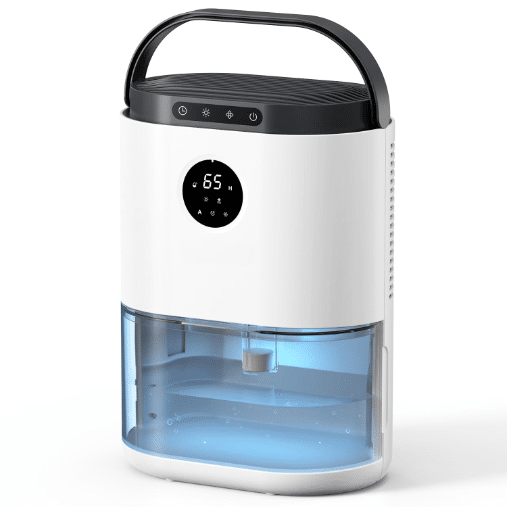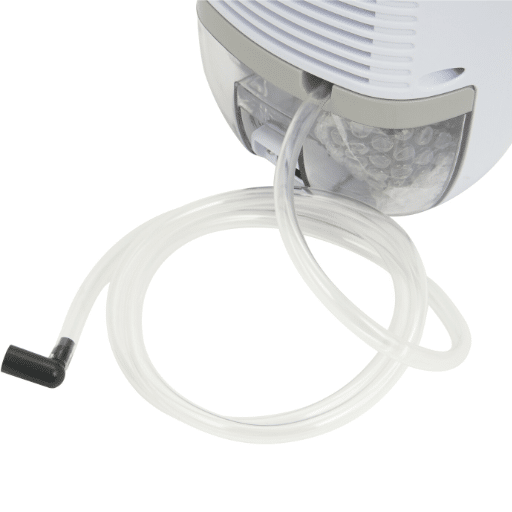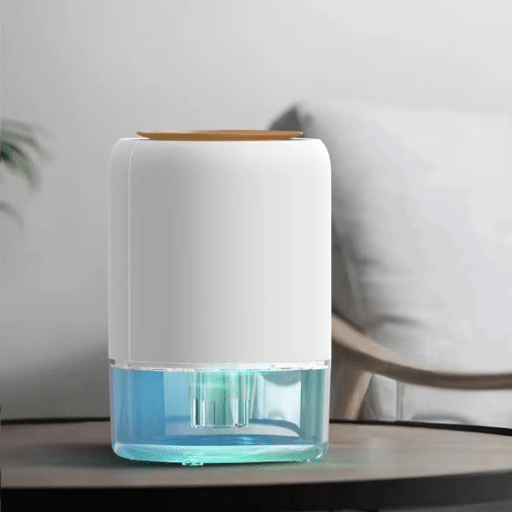When it comes to sustainable gardening and resource conservation, many plant enthusiasts are on the lookout for creative ways to reuse household resources. One common question that arises is whether the water collected from a dehumidifier can be safely used to nourish plants. On the surface, it seems like an eco-friendly solution—after all, it’s water that would otherwise go to waste. But is it really beneficial, or could it harm your beloved greenery? In this article, we’ll explore the science behind dehumidifier water, uncover potential risks and rewards, and provide practical insights to help you determine if it’s the right choice for your indoor or outdoor plants. Stick around to make an informed decision that supports both your plants and the environment.
What is Dehumidifier Water and How is it Collected?

Dehumidifier water, often referred to as condensate, is the water that a dehumidifier removes from the air. Dehumidifiers work by drawing in moist air, cooling it on a set of coils, and collecting the water that condenses as a result. This water is then stored in a removable tank or directed to a drainage system. It is important to note that this water is not pure and may contain dust, microbes, and trace amounts of metals collected from the air and the dehumidifier itself. While it can have practical uses, it is not suitable for drinking without proper treatment.
Understanding the Dehumidifier Functionality
Modern dehumidifiers have evolved significantly, incorporating advanced technologies for enhanced efficiency and user experience. Many contemporary devices utilize smart sensors to monitor room humidity levels in real time, allowing the dehumidifier to adjust its operation dynamically to maintain an optimal humidity range—typically between 30% and 50% depending on individual preferences. This not only conserves energy but also ensures consistently comfortable indoor conditions.
Energy efficiency has become a critical focus, with numerous dehumidifiers now carrying an Energy Star certification. These models consume significantly less electricity than traditional units, translating into cost savings for the user. For example, an Energy Star dehumidifier can use roughly 15% less energy, equating to a notable reduction in your utility bills over time.
Many high-end models offer features such as continuous drainage options, which eliminate the hassle of manually emptying the water tank. Additionally, advanced filtration systems are implemented to capture airborne particles like dust and allergens, improving air quality while dehumidifying the space. Some dehumidifiers even come with built-in UV-C lights designed to kill bacteria and mold spores, adding an extra layer of protection for those with allergies or respiratory concerns.
To provide greater convenience, modern dehumidifiers often include Wi-Fi connectivity, allowing users to control and monitor the device remotely through smartphone apps. These apps can send alerts for low water levels, maintenance reminders, and even real-time humidity data, offering users better control over their home environment.
This combination of smart technology, energy efficiency, and multifunctional design positions modern dehumidifiers as indispensable tools for both comfort and health in residential and commercial settings.
How Water is Collected from a Dehumidifier
When a dehumidifier operates, it draws in moist air and passes it over chilled coils within the device. This process cools the air, causing the moisture present in it to condense into liquid form. This liquid, commonly referred to as condensate, drips down into a built-in water collection tank or tray. Many modern dehumidifiers are equipped with user-friendly features to enhance this water collection process. For example, larger models often include tanks with capacities ranging from 0.5 to 2 gallons, reducing the frequency of emptying them.
Additionally, some advanced models come with continuous drainage options that utilize a hose connection, allowing water to be directly channeled to a nearby drain, sink, or suitable outlet. Certain high-end dehumidifiers are even equipped with built-in pumps, enabling water to be drained vertically, which is particularly convenient for basements or areas lacking natural drainage. For context, a typical humid home can see a dehumidifier collect anywhere from 20 to 70 pints of water per day, depending on room size, humidity level, and the specific efficiency of the device. These efficient systems ensure effective moisture management, making them invaluable for maintaining healthy indoor environments.
Difference Between Dehumidifier Water and Distilled Water
Dehumidifier water and distilled water may appear similar at first glance, but they differ significantly in composition, purity, and applications. While dehumidifier water is the by-product of removing moisture from the air, it is not purified. This water often contains microscopic contaminants, such as dust, bacteria, and potential chemical residues from the dehumidifier components. These impurities make it unsuitable for direct consumption or sensitive uses.
On the other hand, distilled water undergoes a rigorous distillation process where it is boiled into steam and then condensed back into a liquid. This process effectively removes impurities, minerals, and biological contaminants, resulting in high-purity water. Distilled water is commonly used in laboratories, medical facilities, and machinery, including steam irons and car batteries, where mineral-free water is required to prevent buildup.
To illustrate the distinction, dehumidifier water may contain Total Dissolved Solids (TDS) levels ranging anywhere from 10 to 200 particles per million (ppm), depending on air quality. Distilled water, however, typically has a TDS level close to 0 ppm, ensuring its suitability for delicate applications. It’s essential to recognize these differences when determining the appropriate use for each type of water.
Is Dehumidifier Water Safe for Indoor and Outdoor Plants?
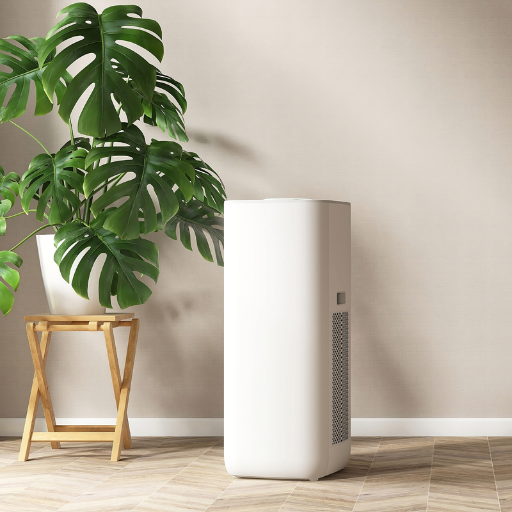
Dehumidifier water can be used for indoor and outdoor plants with caution. While it typically lacks harmful chemicals, it may contain traces of dust, bacteria, or contaminants from the air. To ensure plant safety, avoid using it on edible plants or sensitive species. For general use, it is advisable to filter or boil the water first to reduce potential risks. Always monitor plants for any adverse reactions when using dehumidifier water and prioritize clean, fresh water when available.
Potential Contaminants in Dehumidifier Water
Dehumidifier water can harbor a variety of contaminants that make it unsuitable for irrigating plants or other uses. These impurities often accumulate during the process of moisture extraction from the air. Below are some common contaminants found in dehumidifier water and their potential effects:
- Mold and Mildew Spores
Dehumidifiers extract moisture from the air in damp environments, which can also pull in mold or mildew spores. These spores can transfer to the water collected, making it unsafe for use on plants or for consumption. Mold exposure is particularly harmful to plant roots and soil health, as it encourages rot and fungal diseases.
- Bacteria
Stagnant water in dehumidifier tanks creates a thriving breeding ground for bacteria. These microorganisms can contaminate the water, posing risks to plants by disrupting soil ecosystems or even harming beneficial microbes. Over time, bacterial presence in the soil can hinder plant growth.
- Metal Traces
The condenser coils of dehumidifiers are often made of metals such as copper or aluminum. Water droplets coming into contact with these surfaces can leach tiny amounts of metal into the collected water. Even at low levels, metal traces can be toxic to plants, particularly sensitive species, and may lead to long-term soil contamination.
- Volatile Organic Compounds (VOCs)
Dehumidifiers operating in spaces with strong odors, chemicals, or cleaning products may collect water containing VOCs. VOCs reduce water quality and, when introduced to plants, can cause chemical stress or inhibit natural growth processes.
- Mineral Deposits
Although the amount of minerals in dehumidifier water is often low compared to hard tap water, any residual buildup of minerals can lead to soil salinity issues. High salinity can disrupt root absorption of nutrients and water, leading to plant dehydration.
By understanding these potential contaminants, individuals can better assess the risks of using dehumidifier water. Proper disposal practices or water treatment solutions prior to repurposing can further mitigate negative effects on plants and the surrounding environment.
The Safety of Using Dehumidifier Water for Houseplants
When done correctly, using dehumidifier water on houseplants can be a sustainable practice. Just like water that can be reused for a variety of purposes, known as gray water, dehumidifier water contains dust, mold spores, and even heavy metals in small amounts which may need to be filtered out before reuse. This mixture requires thought before being reused for plant life.
Heavy metals like zinc or copper are important considerations which can leach from the dehumidifier’s coils and accumulate. Studies show being exposed to heavy metals for an extended period of time, even in minuscule amounts, can be detrimental to plant growth, reducing chlorophyll production and stunted development. Occasionally testing with water quality kits can help determine if harmful impurities are present.
Furthermore, the pH balance is crucial to determine the health of plants. Used along with a neutral pH is often how dehumidifier water is stored, but the environment it is collected from greatly dictates how it is stored. Most houseplants thrive in pumped acidic environments, needing the pH level to be around 6.0-7.0, making it critical to be checked regularly with a pH meter.
Dehumidifier water lacks vital nutrients, which is another factor to consider. Hydration is provided for the plants, but there are no fundamental ingredients like nitrogen, phosphorus, or potassium. To overcome this setback, it is suggested to use a balanced fertilizer along with dehumidifier water to improve sprout growth and health.
How to Use Dehumidifier Water for Watering Your Plants

- Check for Cleanliness
Ensure the dehumidifier is clean and well-maintained. Regularly clean the tank and components to prevent contamination from dust, mold, or bacteria.
- Test the Water
Analyze the water for salinity and pH levels. Water with high salt content or an imbalanced pH can harm plants. Use a test kit to ensure compatibility with your plants.
- Use for Non-Edible Plants
Only use dehumidifier water for ornamental or non-edible plants, as it may contain trace chemicals or impurities not safe for consumption.
- Dilute and Mix, If Necessary
Combine dehumidifier water with a small amount of fresh or distilled water, or add diluted fertilizer to provide essential nutrients that the water lacks.
- Monitor Plant Health
After watering, observe your plants over time to ensure they are flourishing. Adjust usage if any negative effects are noticed.
Steps to Ensure the Water is Safe to Use
- Filter the Water
Before using dehumidifier water for plants, pass it through a fine filter to remove any debris or particles that may have accumulated in the system. This simple step helps reduce impurities and ensures cleaner water.
- Check for Contaminants
Test the water for the presence of heavy metals, mold spores, or bacteria, which may be harmful to plants. You can use a home water testing kit or send a sample to a laboratory for a more detailed analysis. Avoid using the water if any contaminants exceed safe levels.
- Monitor Salinity Levels
Use a digital salinity meter to measure the dissolved salts in the water. High salinity levels can lead to soil imbalance, affecting plant growth over time. Ideally, the salinity reading should be below 500 ppm (parts per million) for safe plant use.
- Adjust the pH Balance
Dehumidifier water often has a neutral to slightly acidic pH. Use a pH meter to check the water’s pH level, ensuring it falls within the ideal range for most plants (6.0 to 7.0). If necessary, adjust the pH using natural amendments like lime to make it more alkaline or vinegar to make it more acidic.
- Clean and Maintain the Dehumidifier Regularly
Regular maintenance of the dehumidifier is crucial. Clean the collection tank, condenser coils, and filters frequently to prevent the buildup of mold, bacteria, and other pollutants. A well-maintained system produces safer water for plant care.
- Avoid Stagnant Water
Water that has been sitting in the dehumidifier’s tank for an extended period can harbor algae, bacteria, or other microorganisms. Always use freshly collected water to minimize risks.
- Supplement with Nutrients
Since dehumidifier water lacks essential minerals and nutrients required for plant growth, mix it with nutrient-rich solutions like diluted fertilizer or compost tea. This ensures that plants receive the necessary elements for healthy development.
By following these steps, you can confidently use dehumidifier water in a way that supports the health and growth of your plants while reducing water waste in an eco-friendly manner.
Tips on Watering Your Plants with Dehumidifier Water
To make the most of dehumidifier water while ensuring your plants thrive, consider the following detailed tips:
- Test the Water Quality
Before using dehumidifier water on your plants, test its pH and check for any contaminants. The ideal pH range for most plants is between 6.0 and 7.0. Regular water testing ensures the safety and suitability of the water for your gardening needs.
- Mix with Fresh Water
Dehumidifier water may lack essential nutrients required by plants. To ensure a balanced nutrient supply, mix it with fresh, high-quality water, ideally rainwater or distilled water, in a 1:1 ratio.
- Supplement with Fertilizer
Since dehumidifier water is free of minerals, always supplement your soil with organic fertilizers or compost. For instance, add a diluted liquid fertilizer weekly to maintain nutrient levels essential for healthy plant growth.
- Use Only on Established Plants
Avoid watering delicate seedlings or young plants with dehumidifier water, as they are more sensitive to impurities. Established plants can tolerate minor changes in water quality and are a safer choice.
- Avoid Watering Edible Plants
Dehumidifier water may contain traces of metal or microorganisms that could pose risks if consumed. To err on the side of caution, limit its use to ornamental plants and avoid edible crops like vegetables or herbs.
- Ensure Proper Storage of Water
Always store dehumidifier water in a clean, closed container to prevent contamination and bacterial growth. Use the water within a week to maintain its quality and avoid stagnation.
- Observe Plant Health Regularly
Keep an eye on your plants for signs of stress or unusual growth. If any issues arise, discontinue the use of dehumidifier water and reassess its quality or mixture with other water sources.
By incorporating these tips, you can effectively use dehumidifier water in your gardening routine, minimizing waste and ensuring your plants get the hydration they need in a responsible and sustainable way.
Benefits and Drawbacks of Using Dehumidifier Water on Plants
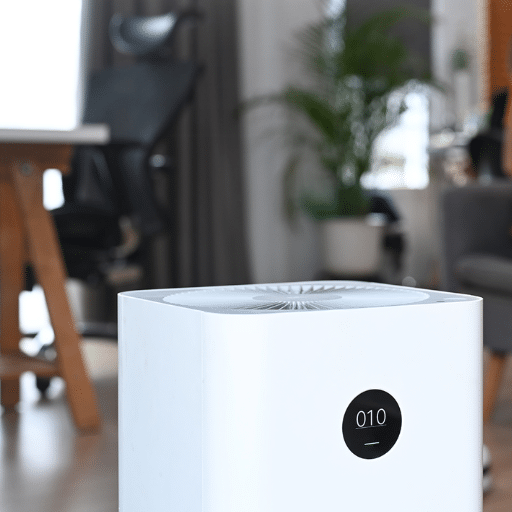
Benefits of Using Dehumidifier Water on Plants
- Reduces Waste: Reusing dehumidifier water helps minimize water waste, making it an environmentally friendly choice.
- Cost-Effective: It provides a free alternative source of water for plants, reducing reliance on tap water or other resources.
- Soft Water: Dehumidifier water is generally free of salts and minerals, which can sometimes accumulate in soil and affect plant health.
Drawbacks of Using Dehumidifier Water on Plants
- Potential Contaminants: Dehumidifier water may contain dust, mold, or bacteria from the air, posing risks to plant health if not properly assessed.
- No Nutrients: Unlike rainwater or tap water, it lacks the essential minerals plants need for growth, so it may not be ideal as the sole water source.
- pH Variability: The pH of dehumidifier water can sometimes be unsuitable for certain plants, requiring testing before use.
Using dehumidifier water for plants can be advantageous, but it is important to evaluate its quality and supplement it with nutrient-rich water when needed.
Advantages of Using Collected Water
Using collected water, such as rainwater or greywater, presents numerous benefits, both environmentally and economically, while significantly aiding sustainable practices. Here are some key advantages:
- Cost Savings: Collecting and reusing water reduces dependency on mains water supplies, leading to lower utility bills. For instance, rainwater harvesting systems can save an average household up to 30%-50% on water consumption, depending on use and climate.
- Conserving Potable Water: Collected water can be used for non-drinking purposes like irrigation, flushing toilets, or cleaning, preserving treated potable water for essential needs. This reduces strain on public water systems and helps ensure better resource management in water-scarce areas.
- Supporting Plant Health: Rainwater, in particular, is naturally soft and free from chemicals like chlorine and fluorine commonly found in municipal water. It also contains trace amounts of nitrogen, which acts as a natural fertilizer, enhancing plant growth.
- Reducing Stormwater Runoff: Harvesting rainwater minimizes surface runoff that can lead to soil erosion, water contamination, and urban flooding. This helps improve land stability and protects nearby ecosystems by preventing pollutants from being washed into rivers or oceans.
- Sustainability Benefits: By reusing collected water, households and businesses contribute to reducing the energy-intensive processes involved in water treatment and distribution, thus lowering their overall carbon footprint.
Potential Drawbacks and Risks
While water collection systems offer numerous benefits, it is important to address potential drawbacks and risks that accompany their implementation. One primary concern is the initial cost of installation. Setting up rainwater harvesting, gray water systems, or other water collection methods often requires significant upfront investment, including materials, labor, and maintenance, which may not be financially feasible for all households or small businesses.
Additionally, contamination risks pose another critical challenge. Improperly maintained collection systems can lead to the accumulation of pollutants, debris, or microbial growth in stored water. For instance, standing water in tanks could become a breeding ground for harmful bacteria or insect larvae, such as mosquitoes that carry diseases. According to recent reports, improperly stored water can significantly increase the risk of waterborne illnesses.
Another issue is the inconsistency in water availability, especially in regions with unpredictable rainfall patterns or arid climates. For example, areas experiencing prolonged droughts may find rainwater harvesting systems ineffective due to insufficient seasonal rainfall. This variability limits the reliability of these systems as a consistent water supply source.
Lastly, regulatory barriers and legal complexities may arise in some regions. Certain jurisdictions enforce restrictions on water collection practices, often tied to water rights and environmental conservation laws. A recent analysis revealed that restrictions on rainwater harvesting are rooted in concerns about potential impacts on local ecosystems and downstream water users.
Addressing these challenges requires careful planning, ongoing maintenance, and an understanding of legal frameworks to ensure that water collection systems are both effective and sustainable in the long term.
Alternative Water Sources for Watering Plants

Collecting rainwater is an excellent way to help supply water for a garden. By harnessing water from rooftops and other surfaces, gardeners can reduce the reliance on city water systems. Another such option is repurposing thoroughly treated greywater, including water from sinks and washing machines. For people living in farming areas, reclassified or reprocessed wastewater is also a good option. These alternatives are best determined by the local government policies, the availability of operating water sources, and the water’s quality. Whatever the case, these alternatives enable saving precious reserves while helping sustain the growth of healthy plants.
Using Rainwater and Tap Water
Combining rainwater and tap water can be an effective strategy to meet irrigation needs while balancing resource efficiency. Rainwater, often collected through barrels or other catchment systems, is naturally soft and free from many chemicals found in treated tap water, such as chlorine. This makes it ideal for watering sensitive plants like ferns or orchids. However, rainwater alone may not always suffice, especially in regions with unpredictable rainfall patterns or during dry seasons.
Tap water, on the other hand, offers a reliable and consistent source but often contains chemicals like fluoride and high mineral content that can lead to soil buildup if used long-term without management. To optimize plant health, a blended approach can be employed. Studies show that alternating between rainwater and tap water can prevent over-reliance on a single source, balancing natural nutrients with accessibility. For instance, estimates suggest that using a rainwater harvesting system for partial irrigation can reduce tap water use by up to 50%, significantly cutting down water bills and promoting sustainability.
If combining sources, testing soil regularly is recommended to ensure proper pH and mineral levels. Additionally, simple methods like allowing tap water to sit uncovered for 24 hours can help dissipate chlorine before use. By integrating rainwater and tap water thoughtfully, gardeners can create an irrigation approach that supports plant health and prioritizes environmental conservation.
Comparing Dehumidifier Water with Grey Water
Dehumidifier water and grey water differ significantly in terms of origin, composition, and potential applications. Dehumidifier water, also known as condensate, is the byproduct of air moisture being condensed through refrigeration. This water is essentially distilled during the process and contains minimal dissolved minerals but may include traces of dust, microbes, or contaminants from the air. It’s considered relatively clean but not potable without further purification.
On the other hand, grey water refers to used household water from sinks, showers, bathtubs, and washing machines. While it is free of harmful waste like black water (from toilets), grey water can contain soaps, detergents, food particles, and organic matter. Due to this, it requires treatment or careful handling when repurposed for irrigation or other non-potable purposes.
A study by the Water Research Foundation highlights that dehumidifier water typically has a lower pH level, ranging from 5.0 to 7.0, which can make it slightly acidic. This contrasts with grey water, which tends to align more closely with the household water supply’s pH, usually between 6.5 and 8.5. Additionally, grey water provides nutrients like nitrogen and phosphorus that can benefit plants when used responsibly for irrigation, whereas dehumidifier water lacks these nutrients entirely.
When considering uses, dehumidifier water is more suited for non-sensitive tasks such as flushing toilets, cleaning surfaces, or watering non-edible plants after simple filtration. Grey water, with appropriate treatment and systems in place, can support larger-scale irrigation, reducing household water waste.
By understanding the distinct characteristics and applications of these two types of water, households can make informed decisions about reuse practices tailored to their specific needs and environmental goals. Proper handling and adherence to safety regulations remain crucial when integrating these water sources into everyday use.
Reference Sources
- Greenhouse Modeling and Climate Control3:
- Focus: This study models and controls greenhouse temperature and humidity using fuzzy logic.
- Key Findings: The fuzzy logic controller effectively regulates greenhouse climate, reducing energy consumption without using a dehumidifier system.
- Methodology: Simulink/Matlab was used to simulate greenhouse dynamics, and fuzzy logic was applied for climate control.
Frequently Asked Questions (FAQs)
Q: Is the water from a dehumidifier safe to use for your plants?
A: Water from a dehumidifier is generally safe to use for watering non-edible plants. However, it is not recommended for plants you intend to eat due to potential contaminants.
Q: Can I use water from the dehumidifier reservoir for indoor plants?
A: Yes, you can use water from the dehumidifier reservoir for indoor plants. It is a good way to reuse and recycle gray water at home.
Q: Is dehumidifier water good for plants compared to rain water?
A: Dehumidifier water lacks the mineral-rich nutrients found in rain water, such as calcium and magnesium, so it may not be as beneficial for plant growth over the long term.
Q: Is the water from a dehumidifier safe to drink?
A: No, water from a dehumidifier is not safe to drink as it may contain bacteria and other contaminants.
Q: Can I use dehumidifier water to water the plants outdoors?
A: Yes, you can use dehumidifier water for outdoor irrigation, but ensure the plants you are growing are not intended for consumption.
Q: Does the condensed water from a dehumidifier provide any nutrients to plants?
A: No, condensed water from a dehumidifier does not contain nutrients like calcium and magnesium that are beneficial for plants.
Q: Is dehumidifier water considered distilled?
A: No, dehumidifier water is not distilled. It is collected from the air and may contain impurities.
Q: Can I use it to top off my humidifier?
A: It is not recommended to use dehumidifier water in a humidifier as it might contain impurities that could be dispersed into the air.
Q: Are there any plants that benefit from using dehumidifier water?
A: While it can be used for non-edible plants, it is better to use mineral-rich water for optimal plant health.
Q: How can I ensure the water from my dehumidifier is perfectly safe for plants?
A: To ensure the water is safe, you can filter it or use it in conjunction with other mineral-rich water sources like RO water.

